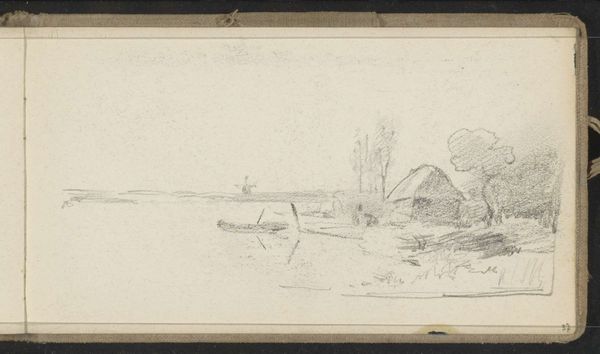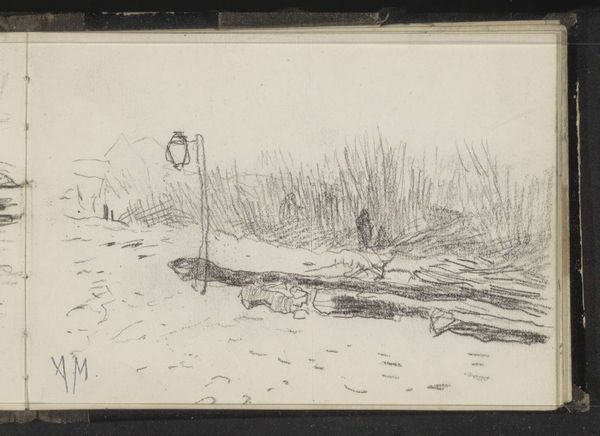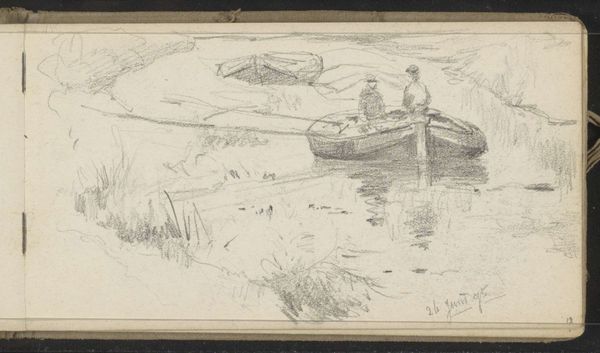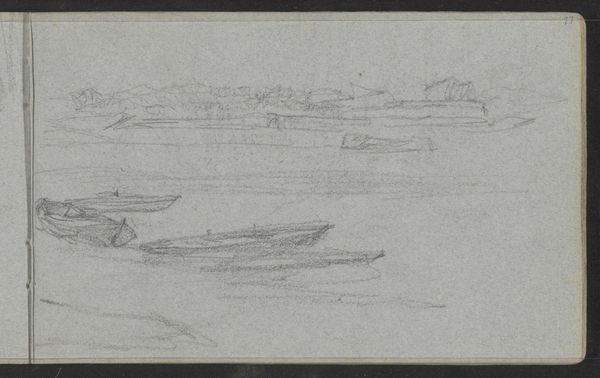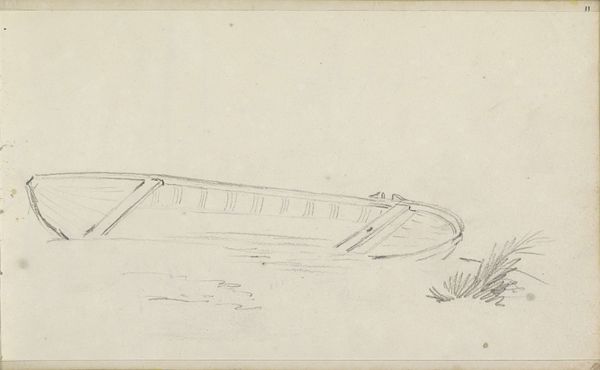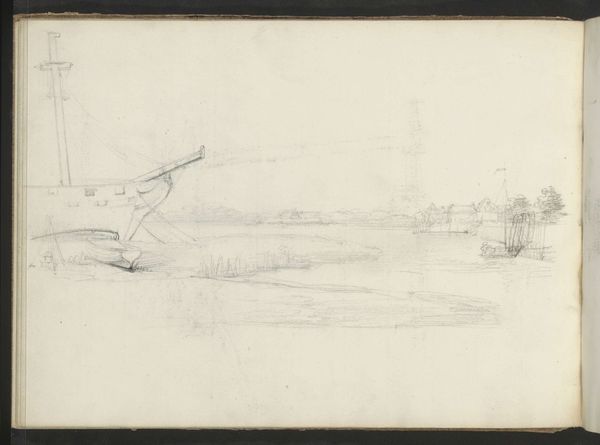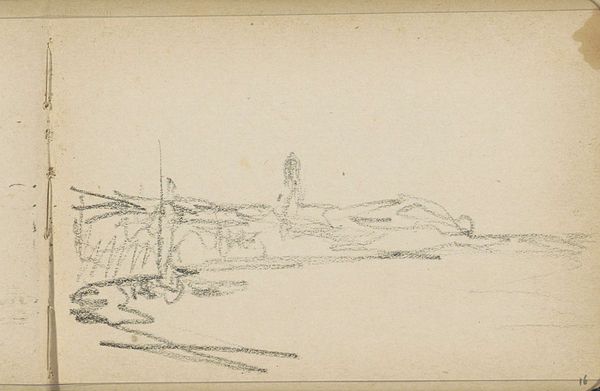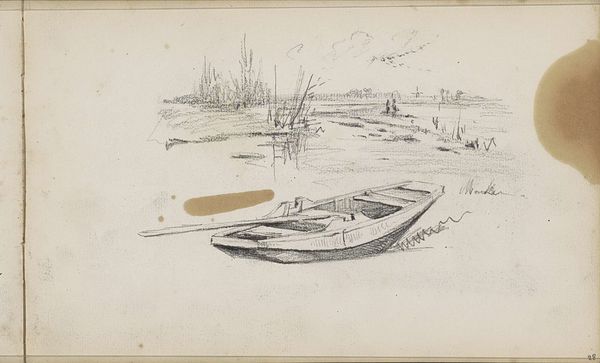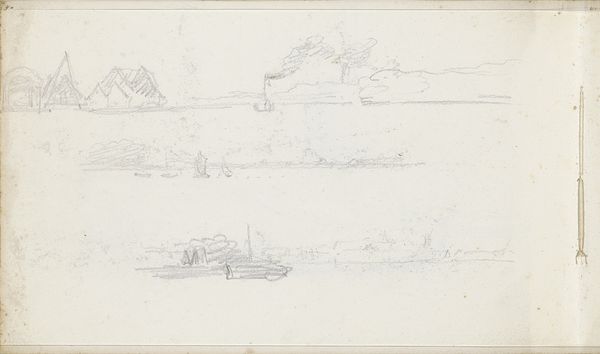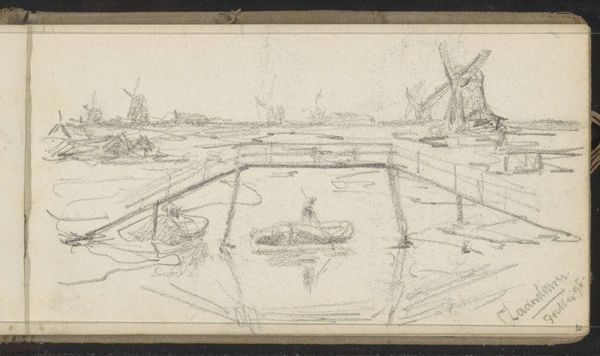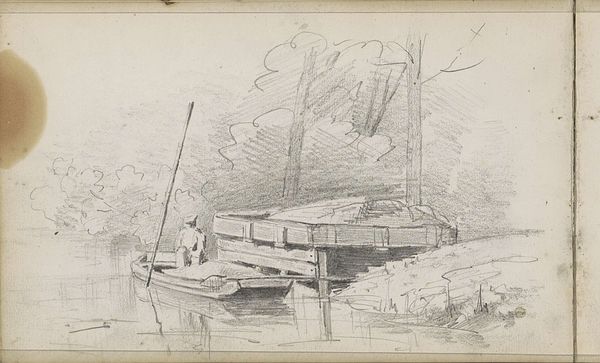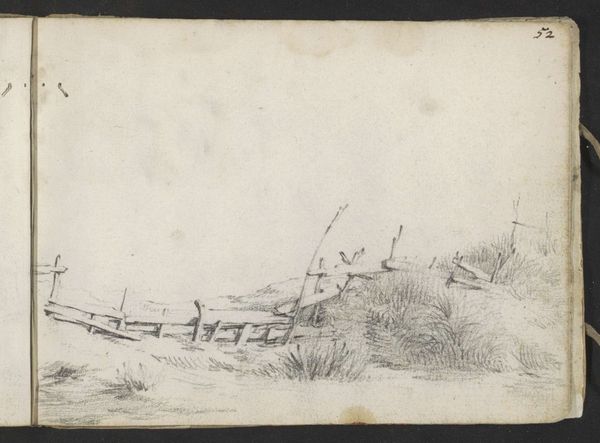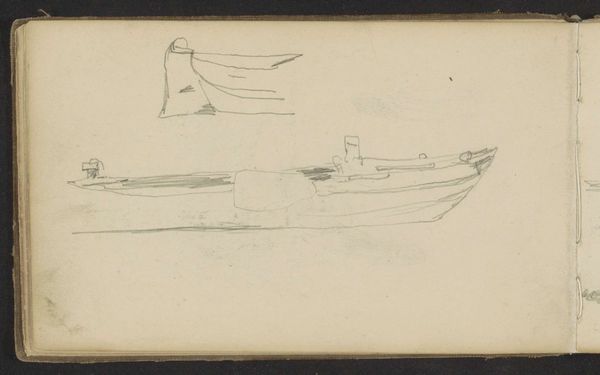
drawing, pencil
#
drawing
#
aged paper
#
toned paper
#
quirky sketch
#
sketch book
#
incomplete sketchy
#
landscape
#
personal sketchbook
#
sketchwork
#
pen-ink sketch
#
pencil
#
sketchbook drawing
#
sketchbook art
#
realism
Copyright: Rijks Museum: Open Domain
Curator: Cornelis Springer created this pencil drawing, entitled "Rowboat on the Beach," sometime between 1860 and 1866. It's currently held at the Rijksmuseum. Editor: It's surprisingly evocative for such a simple sketch. The pale paper and soft lines give it a quiet, melancholic air. Almost dreamlike. Curator: Interesting. Considering Springer's output of primarily architectural paintings, I wonder about the materiality here: was the sketchbook readily available during travel or specifically chosen for its portability and accessibility for plein air sketches like this? Editor: Perhaps it’s the universal symbolism of the boat itself – a vessel, stranded. We inherently understand boats as representing journeys, passages… and here it sits, inert. The sketch itself even feels a bit vulnerable on this aged, almost transparent paper. Curator: Absolutely, we should look closely at how the artist chooses to depict and render the beached boat using only pencils and paper. Notice the contrasting linear strokes describing the wooden boat versus the loose marks rendering tall grasses. Are we perhaps looking at a rapid depiction to suggest something particular about a locale’s economy or the artist's means of travel? Editor: I'm also drawn to the posts in the background – they almost appear as grave markers, heightening that sense of stillness and… what feels like an elegy. The overall effect is strangely contemplative, prompting questions about loss, maybe? A community’s connection with this beached vessel? Curator: Or could this be a preliminary rendering where Springer uses light to his advantage? His focus appears more invested in the construction of the boat than any kind of loaded visual symbolism. Note his choices about defining or eliding details; what sort of craft production is he prioritizing, either for documentation or later rendering in paint? Editor: Perhaps that melancholic feeling stems from the starkness itself – the boat's vulnerability against the open shore, underscored by that pale, aged paper. I notice the light. What seems quickly captured feels pregnant with meaning when time passes and we keep such simple sketches as records in prominent institutions. Curator: You've offered some very valuable cultural and emotional interpretations, tracing this sketch back into larger questions of iconography and collective cultural identity. This deeper, symbolic dimension alongside its materiality is a very potent pairing. Editor: Thank you. And you’ve grounded us in the artist's material choices and practical decisions that underscore the object’s artistic value.
Comments
No comments
Be the first to comment and join the conversation on the ultimate creative platform.
